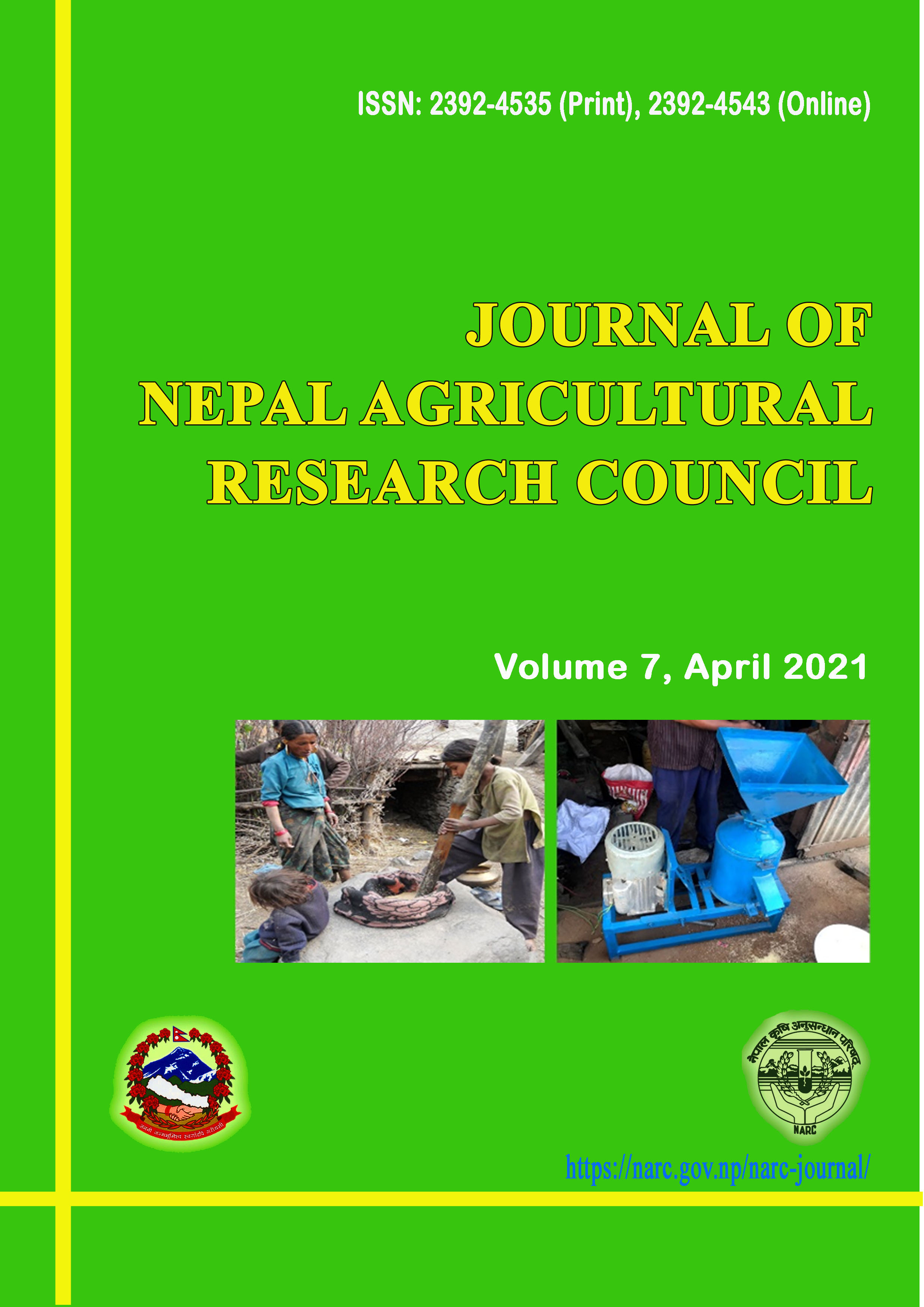Economics of Organic vs Inorganic Rice Production: A Case of Chitwan District of Nepal
DOI:
https://doi.org/10.3126/jnarc.v7i1.36933Keywords:
Benefit cost ratio, Indexing, Organic farming, Probit regression, RiceAbstract
xiii
Rice (Oryza sativa L.) is the major staple food crop of Nepal. A research was conducted in December, 2019 to examine the economic viability of organic rice farming and factors affecting its adoption. Fulbari area of Chitwan district of Nepal was purposively selected for this study on consultation with Agriculture Knowledge Centre, Chitwan and review of past works which showed good practice of organic rice farming. A total of 100 farm households, 50 organic and 50 inorganic were selected using simple random sampling. Primary data were collected through a pre-tested semi-structured interview schedule, while secondary data were collected from related publications. The probit regression analysis showed that the six variables were statistically significant for the decision to adopt organic rice farming, they are: number of schooling years of the household head (p= 0.014), annual household income from agriculture (p= 0.012), membership of any agricultural organization (p= 0.000), subsidy in other inputs in addition to seed and fertilizers (p= 0.000), area of rice cultivated land (p= 0.007) and awareness on climate change (0.086). The benefit cost ratio of organic rice production (2.2) was higher as compared to inorganic (1.9) which showed that the profitability in organic rice production was higher than in inorganic. Furthermore, indexing identified- lengthy certification process (0.85) as the first major hindrance in adoption of organic rice farming followed by lack of proper organic market (0.68), high cost of organic seed and fertilizer (0.56), lack of knowledge and trainings on organic farming (0.48) and lack of government support such as grants and premium price (0.44) as the second, third, fourth and fifth hindrances respectively. The government should promote organic rice farming, prioritizing the small scale and marginal farmers by giving subsidies and premium, facilitating in certification and marketing, and providing knowledge about climate change.
Downloads
Downloads
Published
How to Cite
Issue
Section
License
This license enables reusers to distribute, remix, adapt, and build upon the material in any medium or format for noncommercial purposes only, and only so long as attribution is given to the creator.




